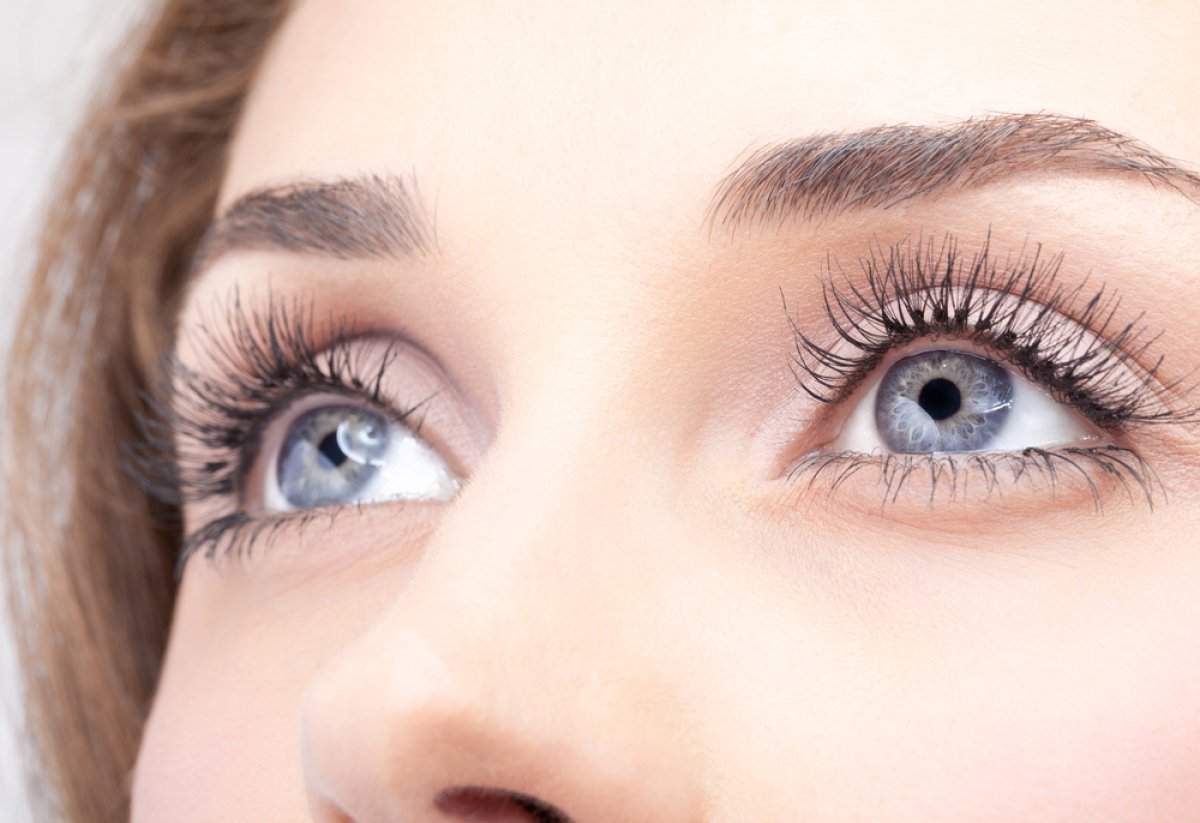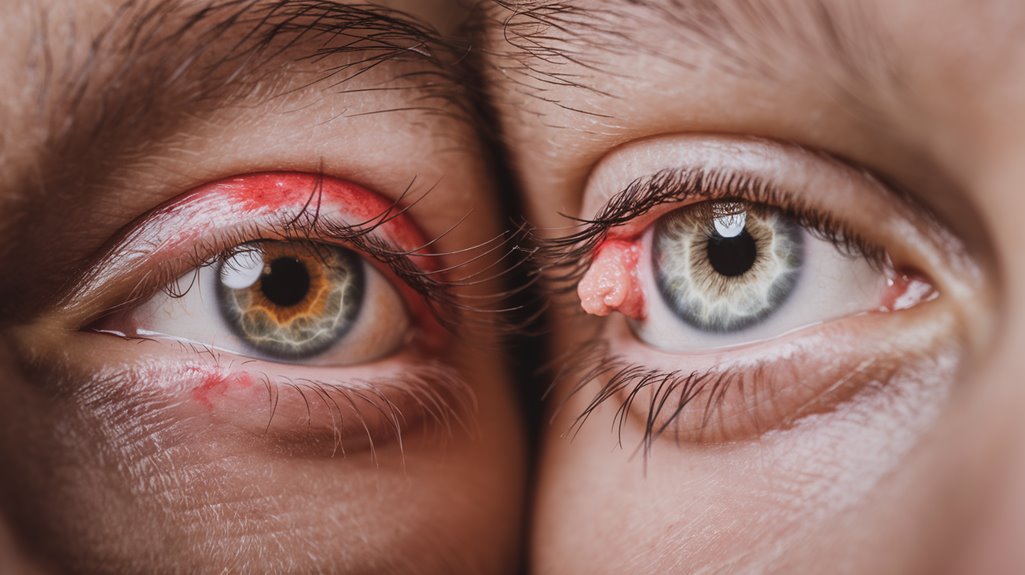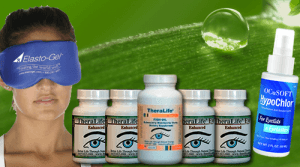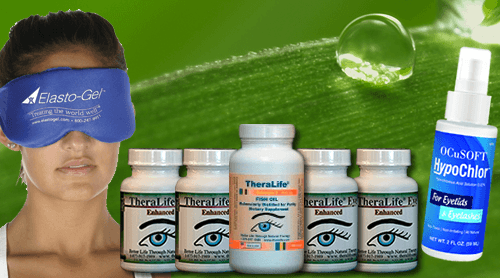Blepharitis and styes are distinct eye conditions that demand attention, each having unique symptoms and treatments. Blepharitis is characterized by chronic inflammation, redness, and crusting of the eyelids, often due to bacterial infections or gland dysfunction. For effective management, maintaining eyelid hygiene with warm compresses and cleansers is crucial. On the other hand, styes are acute, painful, pus-filled bumps caused by bacteria, typically managed with warm compresses and topical antibiotics.
Theralife.com offers insight into these conditions and a range of products specifically designed to support eye health and provide relief. Theralife’s natural solutions focus on enhancing the body’s ability to manage eye conditions, promoting overall eye wellness. Their products, such as nutritional supplements, are formulated to address underlying causes of eye discomfort, providing a holistic approach that goes beyond temporary relief. Additionally, Theralife emphasizes lifestyle adjustments and dietary recommendations to support long-term eye health, making their offerings a comprehensive choice for those dealing with blepharitis and styes.
Best Blepharitis Treatment From TheraLife
Key Takeaways
- Blepharitis involves chronic eyelid inflammation; styes result from an acute bacterial infection, often by Staphylococcus aureus.
- Blepharitis requires consistent eyelid hygiene and possible medical treatment; styes often resolve with warm compresses and hygiene.
- Blepharitis symptoms include crusting and redness; styes present as painful, pus-filled bumps on the eyelid margin.
- Both conditions may be worsened by poor eye care habits and environmental factors.
- Preventive measures include regular eyelid cleaning, avoiding touching eyes with dirty hands, and maintaining contact lens hygiene.
Understanding Blepharitis: Causes and Symptoms
Blepharitis, an inflammatory eye condition, primarily affects the eyelids and is a frequent cause of eye irritation. You might experience symptoms such as redness, swelling, and crusting at the eyelid margins. Blepharitis triggers often include bacterial infections, seborrheic dermatitis, and meibomian gland dysfunction. Identifying these triggers is essential in blepharitis management, as it helps tailor treatment to your specific needs. Inflammatory cytokines such as IL-1beta, TNF-alpha, and IL-8 are induced by hyperosmolar stress, highlighting the inflammatory mechanisms involved in both blepharitis and dry eye conditions. Effective blepharitis management involves maintaining eyelid hygiene, using warm compresses, and sometimes applying antibiotic or anti-inflammatory medications.
Exploring Styes: What Causes Them and How They Present
You might notice a stye when bacteria from your skin, such as Staphylococcus aureus, infects an eyelash follicle or oil gland. Commonly, styes present as painful, red bumps near the edge of your eyelid, often accompanied by swelling and tearing. Recognizing these signs early helps guarantee prompt management and prevents further complications. In some cases, the infection can spread and lead to more serious conditions such as cellulitis, which emphasizes the importance of early treatment and monitoring.
Causes of Styes
Styes, also known as hordeolums, primarily arise from the acute infection of oil glands in the eyelid, often caused by the bacterium Staphylococcus aureus. This bacterial invasion typically leads to inflammation and the formation of a painful, red bump. To aid in stye prevention, maintain proper eyelid hygiene by regularly washing your face and avoiding touching your eyes with unclean hands. Risk factors include poor eye care habits and a weakened immune system. Although styes are usually self-limiting, complications can occur if the infection spreads, potentially leading to cellulitis or chronic eyelid inflammation. Early management, including warm compresses and proper hygiene, can mitigate these risks and promote healing, ensuring you minimize the likelihood of recurrence and complications. Applying a warm washcloth for 5-10 minutes several times a day can help alleviate symptoms and speed up recovery.
Stye Appearance Signs
When identifying stye appearance signs, focus on the hallmark attributes such as a localized, painful, and erythematous bump on the eyelid. This acute condition, often due to stye formation, may present as a small, pus-filled abscess. Patients typically report tenderness and swelling, potentially leading to stye complications if untreated. Look for these clinical indicators:
- Localized Swelling: A red, swollen area on the eyelid margin, indicating inflammation.
- Pain and Tenderness: Discomfort or soreness exacerbated by touch or blinking.
- Pus Discharge: Yellowish secretion may emerge as the stye drains spontaneously.
Prompt recognition and management of these signs can mitigate discomfort and prevent further stye complications. Although styes are contagious, good hygiene practices can help reduce the risk of transmission. Employ warm compresses and consult healthcare professionals for persistent or recurrent cases.
Comparing Blepharitis and Styes: Key Differences Explained
When distinguishing between blepharitis and styes, it’s important to understand their causes and risk factors, which include bacterial infections and gland dysfunctions.
You’ll notice that while both conditions share some symptoms, such as eyelid swelling, their diagnosis hinges on specific presentation and progression.
The TheraLife All In One Starter Kit offers a comprehensive approach to treating blepharitis, addressing eyelid infection, dry eyes, and clogged meibomian glands, whereas styes may resolve with simple home care or minor medical intervention.
Treatment and prevention strategies also differ, with blepharitis often requiring long-term management, whereas styes may resolve with simple home care or minor medical intervention.
Causes and Risk Factors
Although both blepharitis and styes affect the eyelids, their causes and risk factors differ considerably, impacting treatment approaches. Understanding these differences is essential for effective management.
- Blepharitis Triggers: Chronic inflammation often arises from bacterial colonization, seborrheic dermatitis, or meibomian gland dysfunction. These triggers necessitate ongoing management to prevent recurrence.
- Stye Complications: Styes, or hordeola, typically result from acute bacterial infection of eyelash follicles or glandular obstructions. Risk factors include poor eyelid hygiene and previous occurrences, which can complicate with cellulitis if untreated.
- Shared Risks: Both conditions are exacerbated by ocular rosacea, and environmental factors such as dust and allergens can increase susceptibility. Regular eyelid hygiene is crucial to minimize symptom recurrence and manage both blepharitis and styes effectively.
Symptoms and Diagnosis
Understanding the causes and risk factors of blepharitis and styes sets the stage for recognizing their distinct symptoms and diagnostic criteria.
Blepharitis symptoms typically include eyelid inflammation, redness, and crusting around your lashes. You might also experience a gritty sensation in your eyes, often accompanied by excessive tearing.
In contrast, a stye presents as a painful, red bump on the eyelid, resembling a pimple. It’s usually tender to touch and may be filled with pus.
Chalazions and styes can both cause eyelid swelling and inflammation, which in severe cases may lead to blurred vision.
For a stye diagnosis, your eye doctor will conduct a thorough examination, focusing on the affected eyelid. They’ll likely look for localized redness or swelling and assess whether it’s impacting your vision.
Recognizing these differences enables you to seek timely and appropriate medical attention for each condition.
Treatment and Prevention
To effectively manage blepharitis and styes, you must understand their distinct treatment and prevention strategies. For blepharitis, focus on eyelid hygiene and consider natural remedies like warm compresses to alleviate symptoms. Styes require a different approach, often resolving on their own, but warm compresses can expedite healing. Here are key strategies for treatment and prevention:
- Natural Remedies: Use warm compresses for both blepharitis and styes to reduce inflammation and promote drainage.
- Lifestyle Changes: Maintain strict eyelid hygiene and avoid eye makeup during flare-ups to prevent recurrence.
- Medical Interventions: Consult a healthcare provider if symptoms persist or worsen, as they may prescribe antibiotics for blepharitis or recommend surgical drainage for severe styes.
Implementing these strategies can effectively manage and prevent ocular discomfort. A critical aspect of managing blepharitis is the use of specialized eyelid cleansers like Avenova, which are effective in reducing bacteria and inflammation.
Identifying Symptoms: How to Recognize Blepharitis
How can you tell if you’re dealing with blepharitis? Begin with symptom identification through visual inspection.
Look for redness and swelling at the eyelid margins—classic signs of inflammation. You might notice crusting or flaking at the base of your eyelashes, often accompanied by itchiness or a burning sensation.
Some experience watery eyes or a gritty feeling, as if sand is trapped in the eye. Pay attention to any changes in your vision, such as increased sensitivity to light.
Blepharitis can also cause eyelid sticking, especially upon waking. If these symptoms persist, consult a healthcare professional for a thorough eye examination.
Blepharitis is a chronic condition that often requires ongoing management to alleviate symptoms and prevent exacerbations. Early diagnosis and appropriate management can alleviate discomfort and prevent potential complications. Remember, your vigilance is vital in maintaining eye health.
Recognizing Styes: Common Signs to Watch Out For
If you’re unsure whether you’re dealing with a stye, focus on the key signs that differentiate it from other eyelid conditions. A stye typically presents as a painful, red, and swollen bump near the edge of your eyelid, often resembling a pimple.
It’s vital to recognize these signs early to prevent stye complications. Here are three key indicators to watch for:
- Localized pain and tenderness: Often the first symptoms, indicating inflammation.
- Swelling and redness: These are common around the affected area, distinct from blepharitis.
- Pus-filled bump: A hallmark of styes, differing from the more diffuse crusting of blepharitis.
Proper identification aids in effective blepharitis management and stye treatment, minimizing potential complications. Incorporating regular eye cleansing into your routine can help manage symptoms and prevent future occurrences of styes. Always consult healthcare professionals for diagnosis.
Best Blepharitis Treatment From TheraLife
Treatment Options for Blepharitis: From Home Remedies to Medical Care
Wondering how to effectively manage blepharitis? Start with consistent eyelid hygiene. Home remedies like warm compresses can help loosen crusts and debris, while gentle lid scrubs with diluted baby shampoo or commercial eyelid cleansers minimize bacterial load.
Omega-3 supplements may reduce inflammation. If symptoms persist, consider medical treatments. Your physician might prescribe topical antibiotics for bacterial involvement or topical corticosteroids for inflammation control.
In cases with underlying conditions like rosacea, addressing the root cause is essential. If dry eyes accompany blepharitis, artificial tears or eyelid wipes could offer relief.
Always consult your healthcare provider to tailor a treatment plan specific to your needs, combining home remedies with appropriate medical interventions for best outcomes.
Managing Styes: Effective Treatments and Relief Strategies
Styes, small painful lumps often found on the eyelid, can be effectively managed with a few targeted strategies.
First, consider natural remedies: warm compresses applied to the affected area can alleviate discomfort and promote drainage. This simple method is often recommended due to its ease and effectiveness.
Second, over-the-counter treatments like antibiotic ointments may offer relief by targeting bacterial involvement. It’s essential to follow the package instructions carefully to guarantee ideal results.
Finally, oral analgesics can help alleviate pain and reduce inflammation, providing symptomatic relief during the healing process.
Preventive Measures: How to Reduce the Risk of Blepharitis and Styes
While managing styes effectively, it’s also important to focus on preventive measures to reduce the occurrence of both blepharitis and styes.
Implementing proper hygiene practices is essential. Regularly wash your eyelids with a gentle cleanser or diluted baby shampoo to remove debris and reduce bacteria. Avoid touching your eyes with unclean hands to minimize infection risk.
Lifestyle changes can also notably impact prevention. Maintain a balanced diet rich in omega-3 fatty acids to support eye health. Stay hydrated to guarantee proper gland function.
For contact lens users, adhere to strict cleaning protocols and replace lenses as recommended. Additionally, manage stress levels, as stress can compromise immunity, increasing susceptibility to infections.
When to Seek Professional Help: Guidelines for Both Conditions
If symptoms persist or worsen, it’s vital to seek professional help for both blepharitis and styes. Identifying blepharitis triggers and understanding potential stye complications can prevent further issues.
Consider consulting an eye care specialist if:
- Persistent Symptoms: If redness, swelling, or discomfort doesn’t improve with home care, professional evaluation is important.
- Vision Changes: Any alterations in vision require immediate attention to rule out serious complications.
- Recurrent Episodes: Frequent occurrences may indicate underlying conditions needing medical intervention.
Blepharitis can lead to chronic inflammation, while untreated stye complications might result in more severe infections.
Early professional guidance guarantees appropriate treatment, preventing escalation. Your healthcare provider can tailor a management plan to address both conditions effectively, focusing on reducing triggers and mitigating risks.
Best Blepharitis Treatment From TheraLife
Frequently Asked Questions
Can Wearing Contact Lenses Worsen Blepharitis or Styes?
Wearing contact lenses can worsen blepharitis or styes if you don’t maintain proper contact lens hygiene.
Poor hygiene increases eye infection risk, as bacteria can accumulate on lenses and transfer to your eyelids.
To minimize this risk, clean and disinfect your lenses as instructed by your eye care provider.
Replace lenses regularly and avoid wearing them during active infections.
This approach helps reduce complications and supports overall eye health.
Are There Any Dietary Changes Recommended for Blepharitis or Stye Prevention?
When it comes to prevention, you’re what you eat!
Incorporating dietary supplements and omega fatty acids into your diet can be beneficial. Omega-3 fatty acids, found in fish oil, may help reduce inflammation and improve eyelid health.
Evidence suggests that a balanced diet rich in these nutrients supports overall eye health, potentially preventing blepharitis and styes.
Focus on a nutrient-rich diet to keep your eyes in top shape!
How Do Allergies Impact Blepharitis or Stye Development?
Allergies can impact the development of blepharitis or a stye by triggering allergic reactions that lead to inflammation.
Your immune response might overreact to allergens, causing eyelid irritation and swelling. This inflammation can obstruct oil glands, promoting both blepharitis and styes.
Managing allergies through antihistamines or avoiding triggers can minimize these issues.
Consult your healthcare provider for personalized strategies to control allergic reactions and support ocular health.
Can Cosmetics Trigger or Aggravate Blepharitis and Styes?
You’re applying your favorite mascara, but did you know certain cosmetic ingredients can trigger or worsen blepharitis and styes?
Poor makeup hygiene, like not removing cosmetics before bed, might block oil glands, fostering inflammation.
Consider a patient who frequently uses waterproof eyeliner; they may notice more eyelid irritation due to residue buildup.
Regular cleansing and choosing hypoallergenic products can help maintain eyelid health and reduce your risk of these uncomfortable conditions.
Are Blepharitis and Styes Contagious to Others?
You might wonder if blepharitis and styes are contagious.
Though they’re often caused by bacteria, they don’t typically spread from person to person.
Transmission methods usually involve direct contact with infected secretions, but the infection risks remain low.
Practicing good hygiene, like washing hands and avoiding sharing personal items, can minimize risks.
Evidence-based research suggests focusing on personal care rather than worrying about transmitting these conditions to others.
Best Blepharitis Treatment From TheraLife
Conclusion
Imagine looking in the mirror, your eyes clear and comfortable, free from the irritation of blepharitis or the pesky bump of a stye. By understanding these conditions, recognizing their symptoms, and employing effective treatments, you can achieve this clarity. TheraLife’s products can help you maintain this comfort and clarity by targeting the root causes of eye conditions like blepharitis and dry eyes. With natural, clinically proven supplements and an emphasis on holistic eye care, TheraLife ensures your eyes are as vibrant as they can be, allowing you to enjoy the world without discomfort or distraction.





